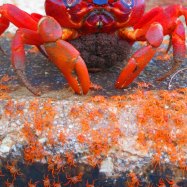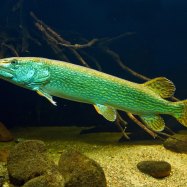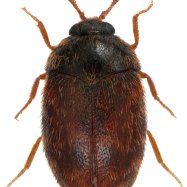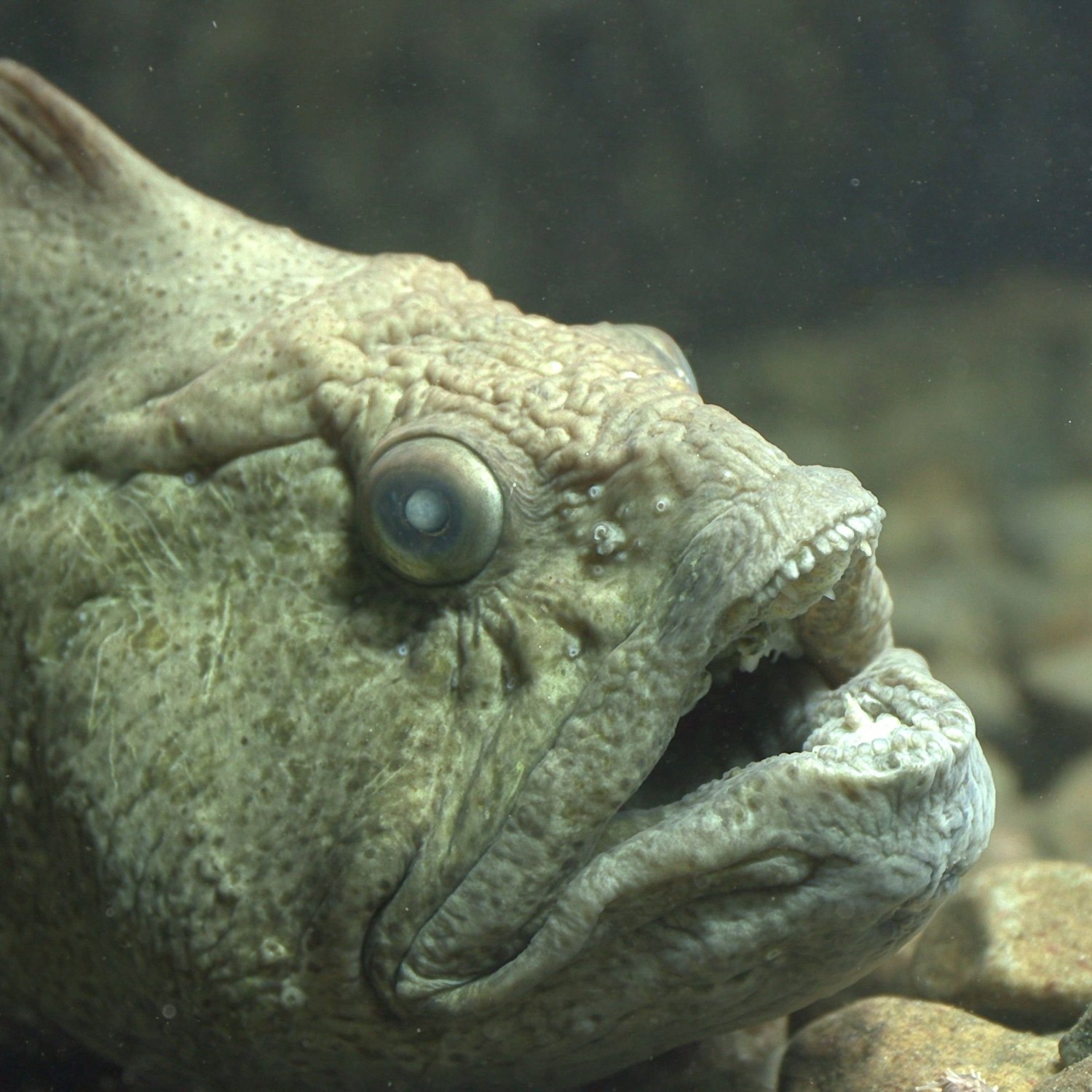
Wolffish
Up to 5 feet (1.5 meters)
The Wolffish, found in coastal areas and deep offshore waters, can reach up to 5 feet in length. With an elongated and cylindrical body shape, it belongs to the Anarhichadidae family. Its unique appearance and habitat make it a fascinating creature to observe in the ocean.
Animal Details Summary:
Common Name: Wolffish
Kingdom: Animalia
Habitat: Marine
The Fascinating World of the Wolffish
As we explore the diverse and wondrous world of marine life, it is hard to miss the impressive and intimidating presence of the wolffish. With its elongated and cylindrical body, sharp teeth, and striking coloration, the wolffish has captured the attention of scientists and ocean enthusiasts alike. But there is more to this remarkable creature than meets the eye. Join me as we delve into the unique characteristics and behavior of the Anarhichas lupus, also known as the Wolffish Wolffish.Known scientifically as Anarhichas lupus, the wolffish is a species of ray-finned fish in the genus Anarhichas. It is also commonly referred to as the Atlantic Wolffish due to its presence in the North Atlantic Ocean. Being a part of the Animalia kingdom and belonging to the Chordata phylum, the wolffish shares its heritage with other fascinating creatures such as sharks and whales. Its class, Actinopterygii, places it within the group of ray-finned fishes, which makes up the majority of fish species.
The wolffish also has a unique order - Perciformes, which includes nearly 40% of all fish species. Within this order, the wolffish belongs to the family Anarhichadidae, together with four other species of wolffish. The close relatives of the wolffish include the Atlantic wolffish, Spotted wolffish, Northern wolffish, and Bering wolffish, all of which share similar characteristics and habitats.
The wolffish can be found in the marine regions of the North Atlantic Ocean, specifically in coastal areas and deep offshore waters. Its geographical distribution covers Canada, the United States, Iceland, and Norway, making it a common sight for fishermen and scuba divers in these regions White Crowned Sparrow. Its habitat preference is in rocky areas, crevices, and caves, where it can hide and find shelter. The wolffish typically lives at depths ranging from 20 to 2,600 feet (6 to 800 meters), although they have been found at depths of up to 4,200 feet (1,300 meters).
One of the most striking features of the wolffish is its distinctive coloration. It has a gray, brown, or black body with a golden tinge, making it blend seamlessly with its surroundings. This coloration serves as a camouflage and allows the wolffish to avoid detection by predators and prey. In addition to its coloration, the wolffish also has a thick layer of mucus covering its body, providing further protection and insulation against the cold waters it inhabits.
Apart from its coloration, the wolffish also has a unique body shape. Its body is elongated and cylindrical, with a large head and wide mouth filled with sharp teeth. These teeth are perfect for its carnivorous feeding method. The wolffish is an opportunistic predator and feeds on a variety of prey, including crustaceans, mollusks, and various fish species. With its strong jaws, the wolffish can easily crush the shells of its prey, making it a formidable predator in the marine ecosystem.
On average, the wolffish can grow up to 5 feet (1.5 meters) in length, but some individuals have been recorded at lengths of up to 6 feet (1.8 meters). Its size and unique appearance have led to it being referred to as the "Ocean Dracula." This nickname is a nod to its sharp teeth and menacing appearance, similar to that of the fictional vampire. Despite its intimidating appearance, the wolffish is not aggressive towards humans and typically avoids contact.
Being a cold-water species, the wolffish has adapted to the harsh conditions of its environment. Its metabolism slows down in the winter, which allows it to conserve energy during the colder months when food is scarce. It is also a solitary species and prefers to live and hunt alone, only coming together during mating season.
Speaking of mating, the wolffish has a unique reproductive method. Unlike most fish species that lay thousands of eggs at a time, the wolffish produces only a small number of large, yolk-rich eggs. These eggs are typically fertilized and then guarded by the male until they are ready to hatch. This behavior is not commonly seen in fish species and sets the wolffish apart from its marine counterparts.
Despite its population being consistently monitored and controlled, mainly due to overfishing, the wolffish is still classified as a species of least concern according to the International Union for Conservation of Nature (IUCN). In part, this is because the wolffish reaches sexual maturity later in life, making it easier for them to reproduce and maintain their populations.
In conclusion, the wolffish is a truly remarkable and fascinating creature that has captivated the minds of many marine enthusiasts and scientists. From its unique body shape and coloration to its solitary behavior and reproductive method, the wolffish has many distinctive features that make it stand out in the vast ocean. As we continue to explore the depths of the North Atlantic Ocean, let us remember and appreciate the incredible presence of the remarkable wolffish.

Wolffish
Animal Details Wolffish - Scientific Name: Anarhichas lupus
- Category: Animals W
- Scientific Name: Anarhichas lupus
- Common Name: Wolffish
- Kingdom: Animalia
- Phylum: Chordata
- Class: Actinopterygii
- Order: Perciformes
- Family: Anarhichadidae
- Habitat: Marine
- Feeding Method: Carnivorous
- Geographical Distribution: North Atlantic Ocean
- Country of Origin: Canada, United States, Iceland, Norway
- Location: Coastal areas and deep offshore waters
- Animal Coloration: Gray, brown, or black
- Body Shape: Elongated and cylindrical
- Length: Up to 5 feet (1.5 meters)
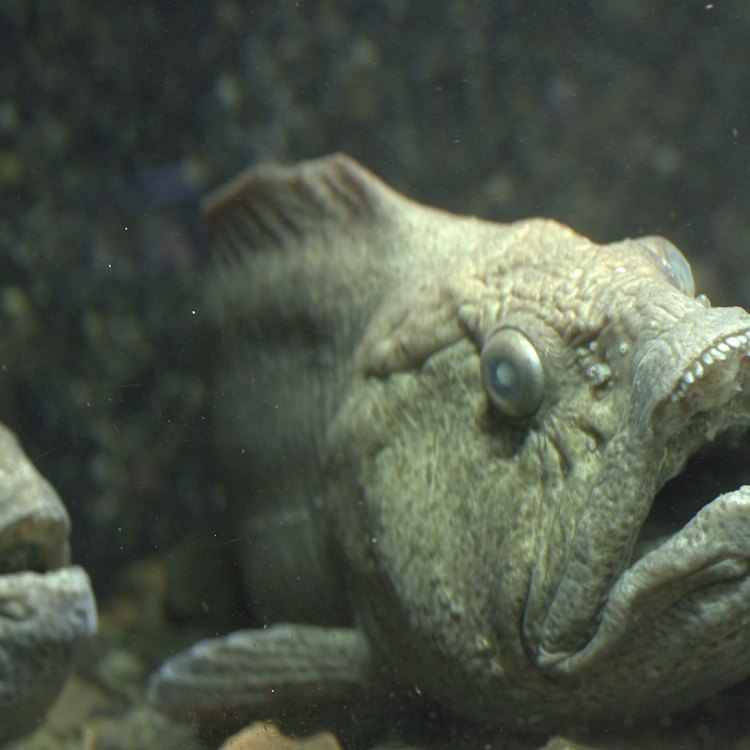
Wolffish
- Adult Size: 3-4 feet (0.9-1.2 meters)
- Average Lifespan: Up to 20 years
- Reproduction: Sexual
- Reproductive Behavior: Mating occurs in late winter or early spring
- Sound or Call: Grunt-like sounds during courtship and territorial disputes
- Migration Pattern: Migratory within their range
- Social Groups: Solitary
- Behavior: Aggressive and territorial
- Threats: Overfishing, habitat degradation, climate change
- Conservation Status: Least Concern
- Impact on Ecosystem: Important role as a predator in maintaining balance in the ecosystem
- Human Use: Commercial fishing, culinary use
- Distinctive Features: Large, sharp teeth and long dorsal fin
- Interesting Facts: Wolffish have an antifreeze protein in their blood that allows them to survive in cold Arctic waters
- Predator: Sharks, larger fish
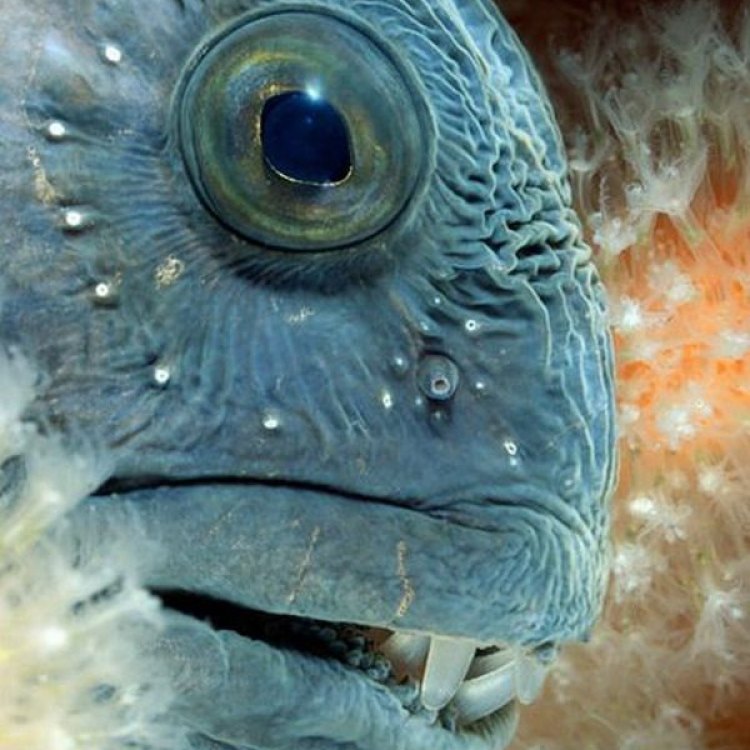
Anarhichas lupus
Discover the Secret Life of the Mighty Wolffish: An Important and Misunderstood Predator
The ocean is a vast and mystical place, filled with creatures that have captured our imagination for centuries. One such creature that often goes unnoticed is the unique and powerful wolffish. These mysterious and elusive creatures can be found in the cold, deep waters of the Atlantic and Arctic oceans. With their distinct features and important role in the ecosystem, the wolffish is a fascinating and important species that deserves to be brought into the spotlight PeaceOfAnimals.Com.Adult wolffish can grow up to 3-4 feet in length, making them one of the largest fish in their range. They have a lifespan of up to 20 years, but little is known about their exact age and growth rate due to their solitary and deep-sea behavior. These fish are found in the North Atlantic Ocean, from New England to Greenland, and in the Arctic Ocean, with the largest populations being found in the Barents Sea and the Norwegian Sea.
The wolffish, also known as the sea wolf or the Atlantic catfish, is not a fish to be underestimated. Their reproductive behavior is sexual, and mating usually occurs in late winter or early spring. At this time, male wolffish become territorial and will fight with other males for the right to mate with a female. They have also been observed to make grunt-like sounds during courtship and territorial disputes, adding to their mysterious nature.
One of the most unique features of the wolffish is their migration pattern. While they are considered migratory within their range, they do not travel long distances like other migratory fish White Faced Capuchin. Instead, they tend to move within a smaller area, closer to their preferred habitat. This behavior is thought to be influenced by changes in water temperature and the availability of food.
In terms of social behavior, wolffish are solitary creatures. They are not known to form groups or schools, and they prefer to live and hunt alone. This behavior is also linked to their territorial nature, as they do not tolerate other fish in their preferred hunting grounds.
The wolffish is a unique and fascinating species with both physical and behavioral characteristics that set them apart from other fish in the ocean. One notable trait is their aggressive and territorial behavior. While this may make them seem intimidating, it is an essential part of their survival. Being solitary creatures, wolffish rely on their aggressive nature to defend their territory, ensuring that they have access to food and mates.
Unfortunately, the wolffish faces several threats to their survival. Overfishing, habitat degradation, and climate change all pose significant risks. In recent years, the wolffish has become a target for commercial fishing due to their large size and sharp teeth, which are highly desired in the culinary world. Overfishing has led to a decline in wolffish populations in certain areas, making them vulnerable to extinction.
Additionally, the degradation of their natural habitat, such as seafloor trawling and pollution, has a negative impact on the wolffish. These fish prefer to live in rocky, cold waters, and any changes to their environment can have a significant impact on their survival. Climate change also poses a threat to the wolffish, as warming waters can alter their behavior, reproduction, and food sources.
Despite these threats, the wolffish is currently listed as least concern on the IUCN Red List of Threatened Species. However, continued monitoring and conservation efforts are necessary to ensure their survival for future generations to admire and learn from.
One of the most crucial roles that the wolffish plays in the ecosystem is as a predator. As a top predator in their habitat, they help to balance the food chain and maintain the health of the ocean. By feeding on smaller fish and invertebrates, the wolffish keeps their populations in check, preventing overgrazing and maintaining a diverse ecosystem. They also serve as prey for larger predators, such as sharks and larger fish, further emphasizing their importance in the food web.
Aside from their ecological significance, the wolffish also has an interesting impact on humans. As mentioned earlier, they are a target for commercial fishing for their sharp teeth and are considered a delicacy in some countries. However, the culinary use of wolffish is not as widespread as other fish, which is why they are often not well-known in the food industry. This lack of popularity has also contributed to their conservation status, as fishing for wolffish is not as commercially lucrative as other fish.
Distinctive features also set the wolffish apart from other marine creatures. They have large, sharp teeth in the front of their mouth, along with smaller teeth towards the back. These teeth are adapted for crushing and grinding shellfish, their preferred prey. Another distinctive feature is their long dorsal fin, which runs along their spine and can stretch up to half their body length.
But perhaps one of the most intriguing facts about the wolffish is its ability to survive in freezing Arctic waters. These fish have an antifreeze protein in their blood, which helps them to regulate their body temperature and prevents their body fluids from freezing in the icy waters. This unique adaptation allows wolffish to thrive in cold, harsh conditions where other fish would struggle to survive.
In conclusion, the wolffish is an important and misunderstood predator of the ocean. With their distinct features, solitary behavior, and crucial role in the ecosystem, these fish deserve our attention and protection. While facing threats from overfishing, habitat degradation, and climate change, the wolffish continues to play a vital role in maintaining balance in the ocean. As we strive towards sustainable practices, it is crucial that we also consider the well-being of these magnificent creatures and preserve their place in the ocean's intricate web of life. So, the next time you think of the ocean's mighty predators, remember the powerful and fascinating wolffish.
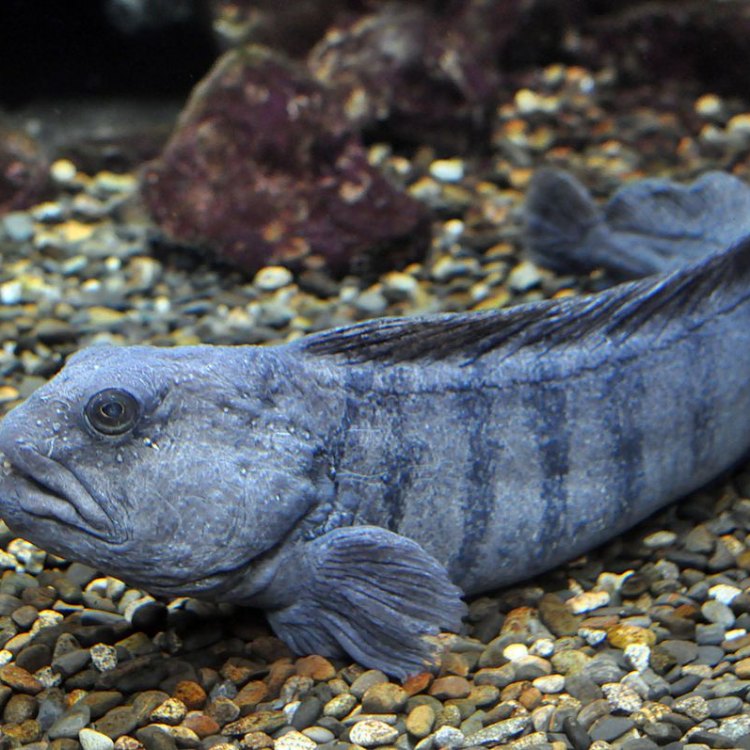
The Fascinating World of the Wolffish
Disclaimer: The content provided is for informational purposes only. We cannot guarantee the accuracy of the information on this page 100%. All information provided here may change without prior notice.





